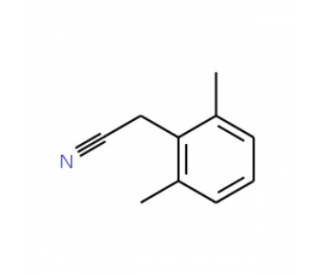詳細說明
Purity
>95%, by SDS-PAGE visualized with Silver Staining and quantitative densitometry by Coomassie? Blue Staining.
Endotoxin Level
<0.10 EU per 1 μg of the protein by the LAL method.
Activity
Measured by its ability to chemoattract BaF3 mouse pro?B cells transfected with human CXCR2. The ED 50 for this effect is 0.15-0.9 ng/mL.
Source
E. coli-derived Thr39-Asn107
Accession #
N-terminal Sequence
AnalysisThr39
Predicted Molecular Mass
8 kDa
SDS-PAGE
6 kDa, reducing conditions
Carrier Free
What does CF mean?
CF stands for Carrier Free (CF). We typically add Bovine Serum Albumin (BSA) as a carrier protein to our recombinant proteins. Adding a carrier protein enhances protein stability, increases shelf-life, and allows the recombinant protein to be stored at a more dilute concentration. The carrier free version does not contain BSA.
What formulation is right for me?
In general, we advise purchasing the recombinant protein with BSA for use in cell or tissue culture, or as an ELISA standard. In contrast, the carrier free protein is recommended for applications, in which the presence of BSA could interfere.
9196-GR/CF |
| 9196-GR |
Formulation Lyophilized from a 0.2 μm filtered solution in PBS. | Formulation Lyophilized from a 0.2 μm filtered solution in PBS with BSA as a carrier protein. | |
Reconstitution Reconstitute at 250 μg/mL in PBS. | Reconstitution Reconstitute at 250 μg/mL in PBS. | |
Shipping The product is shipped at ambient temperature. Upon receipt, store it immediately at the temperature recommended below. | Shipping The product is shipped at ambient temperature. Upon receipt, store it immediately at the temperature recommended below. | |
Stability & Storage: Use a manual defrost freezer and avoid repeated freeze-thaw cycles.
| Stability & Storage: Use a manual defrost freezer and avoid repeated freeze-thaw cycles.
|
Data Images
Bioactivity
| Recombinant Human CXCL1/GRO alpha (Catalog # 9196-GR/CF)attracts BaF3 mouse pro B cellstransfected with human CXCR2. The ED50 for this effect is0.15-0.9 ng/mL. |
Background: CXCL1/GRO alpha/KC/CINC-1
CXCL1, also known as KC, GRO alpha, and CINC-1, is an approximately 8 kDa proinflammatory chemokine that plays a key role in neutrophil migration and activation (1). Mature human CXCL1 shares 64% and 67% amino acid sequence identity with mouse and rat CXCL1, respectively (2). It is produced by many cell types in inflammatory sites and during chronic inflammatory diseases (1). CXCL1 can associate into bioactive dimers and primarily signals through CXCR2/IL-8 RB but can also bind with lower affinity to CXCR2/IL-8 RA (3-5). It induces neutrophil migration, extravasation, respiratory burst, and degranulation and also induces T cells to produce proinflammatory IL-17 (4, 6, 7). CXCL1 additionally binds to Syndecan-1 on epithelial cells which acts as a sink for CXCL1 activity until Syndecan-1 cleavage by MMP-7 (8). CXCL1 is upregulated in spinal cord astrocytes by inflammatory stimuli or tumor cell injection, and it exacerbates pain sensation by potentiating excitatory NMDA neurotransmission (9, 10). In the circulatory system, CXCL1 interacts with CXCR2 on endothelial cells to promote lymphatic tube formation and angiogenesis (11, 12). It promotes the hypertrophic differentiation of chondrocytes resulting in cartilage matrix deposition, calcification, and remodeling (13). It interacts with both CXCR1 and CXCR2 on adipose stromal cells and promotes their recruitment to prostate tumors in obese patients (14). It also binds CXCR2 on ovarian cancer cells, leading to cleavage of cell surface HB-EGF, transactivation of EGF R, and cell proliferation (15). Truncated forms of CXCL1 with 3-5 amino acids removed from the N-terminus are secreted by peripheral blood monocytes and are 30-fold more active than the intact form (16).
References:
Strieter, R.M. et al. (2005) Cytokine Growth Factor Rev. 16:593.
Baker, N.E. et al. (1990) Nucl. Acids Res. 18:6453.
Sawant, K.V. et al. (2015) J. Innate Immun. 7:647.
Geiser, T. et al. (1993) J. Biol. Chem. 268:15419.
Ahuja, S.K. and P.M. Murphy (1996) J. Biol. Chem. 271:20545.
Jin, L. et al. (2014) J. Immunol. 193:3549.
De Filippo, K. et al. (2013) Blood 121:4930.
Gill, S.E. et al. (2016) Am. J. Respir. Cell. Mol. Biol. PMID 26934670.
Cao, D.-L. et al. (2014) Exp. Neurol. 261:328.
Xu, J. et al. (2014) J. Neuroinflamm. 11:38.
Xu, J. et al. (2012) Int. J. Cancer 130:787.
Miyake, M. et al. (2013) Lab. Invest. 93:768.
Merz, D. et al. (2003) J. Immunol. 171:4406.
Zhang, T. et al. (2016) Nat. Commun. 7:11674.
Bolitho, C. et al. (2010) Endocr. Relat. Cancer 17:929.
Wuyts, A. et al. (1999) Eur. J. Biochem. 260:421.
Entrez Gene IDs:
2919 (Human); 14825 (Mouse); 81503 (Rat)
Alternate Names:
CINC1; CINC-1; CXCL1; GRO alpha; KC; MGSA-alpha











 粵公網(wǎng)安備44196802000105號
粵公網(wǎng)安備44196802000105號